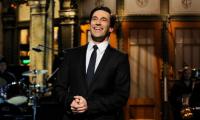the Supreme Court are not insignificant either.
What the lawyers’ movement promised was not just rule of law but a new social contract with a benevolent state ensuring social and economic equality (remember ‘riyasat ho gi maa ke jaisee’). For some it wasn’t hard to understand that it was democracy and rule of law that would foster such progressive change in Pakistan and not restored judges alone. But restoration through a popular movement seems to have engendered within the judiciary a fake sense of being a representative institution or one directly responsible to the people.
Such presumption of representative credentials accounts for judicial overreach that threatens to undermine the constitutional principle of separation of powers and drags the court into purely policy matters. And it continues to breed the false expectation among ordinary people that the judiciary can administer a cure for bad policy or lack of governance – failings of other vital national institutions. The growing power of the Supreme Court has not been accompanied by its exercise (or restraint in its exercise) in such manner that principles of equality, transparency and accountability are seen as being applied across the board including within the judiciary.
Critical self-appraisal of the last few years reveals that there has been no attitudinal or behavioural change within the legal fraternity. If anything, we have changed for the worse in the sense that we have accelerated our descent into mob rule. This is in step with the overall expansion and entrenchment of intolerance and violence within the society. But can there be a bigger predicament for rule of law in any society than to have nurtured within its legal fraternity – men and women who have sworn their allegiance to the law and reason – the habit of relying on the threat of use of force to make their point?
What accounts for the triumph of muscle power over reason and who is responsible for this new mindset? Is it the leaders of the lawyers’ movement, the leaders of the bar, the young and impressionable lawyers (the foot soldiers!) or the leadership of the judiciary that has deliberately promoted an uncanny familiarity between the bench and the bar, hitherto unknown to this profession? When in the past was the bar the constituency of the bench? So long as there is a relationship of patronage between the chief judge and the foot soldier, the foot soldier will take liberties with lesser judicial officers.
Has the independence and authority of the individual judge been strengthened since March 2009? We have had cases where lawyers have beat up civil judges. For any proponent of rule of law it is painful to watch bar association officials walk in and direct judges not to convene court proceedings whenever a strike is called and find the judges complying. And this is at the high court level. What provisions of the Legal Practitioners and Bar Council’s Act, 1973 vest in us the authority to strike court proceedings or order judges not to perform their duties if a strike is called? Who controls these strikes? Why do judges comply with such demands not backed by law? Why do lawyers comply?
We don’t comply because we fear losing our bar license. We comply for the fear of being beaten up by those policing the enforcement of the strike. It is scary even to consider that judges might be motivated by similar concerns. And who controls the strikes? The present leaders of high court bar associations are mostly professional lawyers with ample legal briefs. In private conversations they are sympathetic to the argument that striking the court as a form of protest is neither legal nor constructive as it hurts the litigants. But they are quick to place the onus of strikes on ‘pressure from the bar’ and express their own helplessness. So is no one in control?
In thinking of responsibility one is reminded of George Orwell’s ‘Shooting an Elephant’, where he explained the tyranny of the white man as his utter helplessness in face of amorphous expectations and noted that, “he wears a mask and his face grows to fit it.” The mask that judges and lawyers have been wearing since March 2009 – its ugliness manifest in repeated incidents of hooliganism when it comes to lawyers and moral righteousness when it comes to judges – was designed by events following March 2007. It all started with the CJ. Maybe he could use his last year as a judge to redeem his contribution to strengthening the institutions of the bar and the bench.
Here are a few suggestions. The relationship between the bench and the bar ought to be cordial but not cozy. Once the concept of lawyers being foot soldiers is rejected chief justices will have no need to address district bar associations. Judiciary can only champion principles of transparency and accountability if it is seen practicing them. The refusal to submit accounts for public audit and exercise of judicial power to confer on officers of the court and kith and kin of judges the status of ‘untouchables’ eats into the moral authority of the court.
And let’s please bury the concept of pater familias. Let the administrative power of the office of the CJ (to constitute benches and fix cases) be distributed widely amongst the senior-most judges of the court and exercised transparently so that it neither influences the exercise of judicial power nor undermines the independence of individual judges. But first things first: it is critical for leaders of the bar and the bench to stop throwing their hands up in helplessness and take deliberate steps to return to the practice of using reason and argument to make a point instead of force. Resorting to force as a means to enforce rule of law is too blatant a contradiction to swallow.
Email: sattar@post.harvard.edu
Sialkot’s products meet stringent international quality standards, ensuring their reliability and safety in medical...
Once country with over 20,000 polio cases annually, Pakistan has made historic progress in curbing disease
In crowd of rightest and centrist politicians, Babar stands out as left-leaning activist and public intellectual
Tributes have flowed from highest in land to ordinary if you were to encounter them on street
On April 2, India tabled bill in Lok Sabha, proposing sweeping changes to management of Waqf properties
Trump had even imposed tariffs on uninhabited Heard and McDonald Islands near Antarctica







